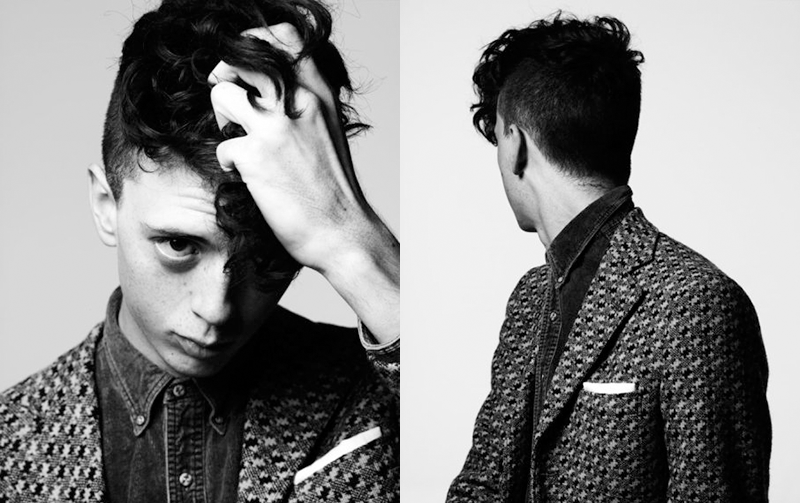
^ Alan Taylor photographed by Hedi Slimane
Male-Mode: You studied fashion design in Dublin (NCAD) and worked closely with Simone Rocha for several seasons (London) – what was the most important thing you took from each of these experiences?
Alan Taylor: It was the people in Dublin that made it. There is such an amazing network of people who really push us to do better, rather than compete against each other. London, and working with Simone, was learning all the details they can’t teach you in university. I got to see the business grow from the ground up, being a part of everything from the production meetings to the show-rooms in Paris.
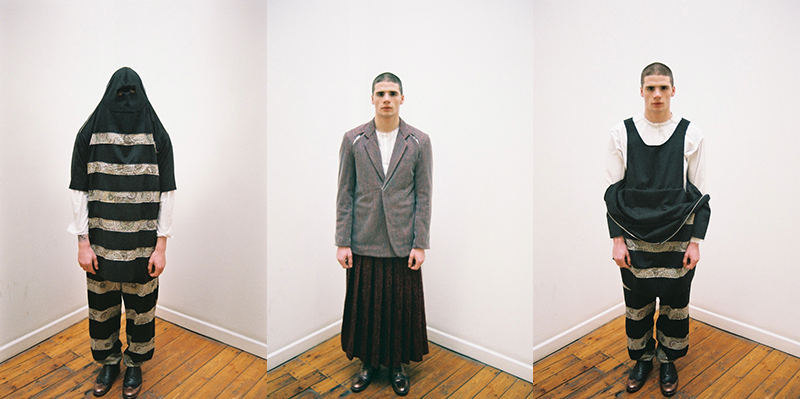
Your AW12 collection might be termed ‘conceptual’ or ‘avant-garde’, for want of better words, but there are still plenty of wearable pieces amongst the experimentation – what are your priorities when designing for men, wearability, imaginative concept or…?
I have a kind of ethos, which is I don’t want my work to be an over-the-top departure from contemporary menswear, rather a development of classic ideas with a fresh take on construction and fabrication. I always want creativity to be at the forefront of my work but I know that fashion is a business at the end of the day, so I look to achieve the perfect balance between the conceptual and the commercial.
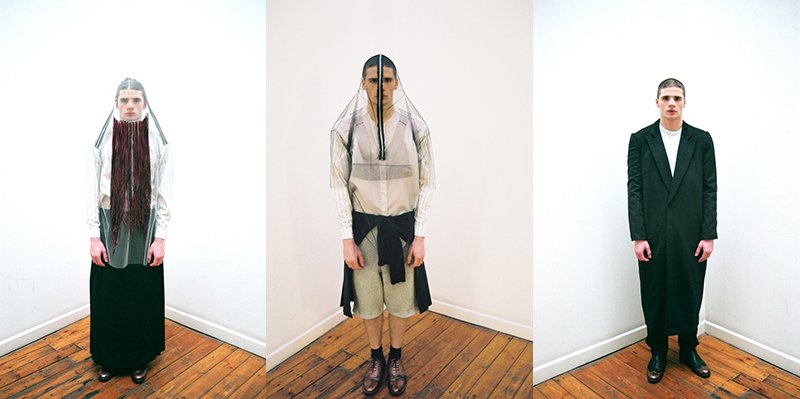
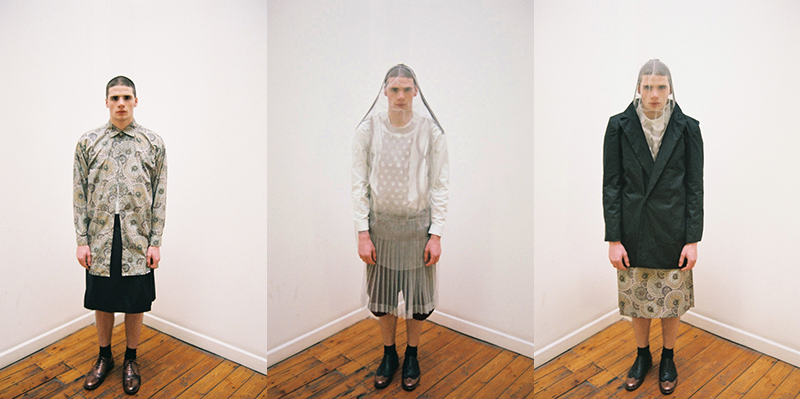
The collection seems to be a clash of traditionally masculine tailoring and a not-so-hidden femininity (kilts, plenty of sheer pieces), do you try to disregard conservative notions of what what might deemed socially gender-appropriate when designing?
Not necessarily, I try to keep my designs masculine, but fuck with it a little through the fabrication and garments – like with the kilt. I think that aesthetically and socially it feels like it fits, the clean lines of the pleats and the silhouette compliment the other garments in my collection and the expansion of menswear as an industry has taken a considerable leap in the past few years.
Men are becoming more aware of not only what they wear but how their clothing is made, the quality and the background of every garment. The kilt is also pushing the entirety of men’s silhouettes; kilts even three years ago would have seemed very feminine. I want to make an ‘Alan Taylor’ kilt a very masculine and understated garment to the extent that when the wearer puts it on, he is so comfortable with the idea of wearing it that he completely forgets he is wearing it at all.
What are the dominant fabrics in the collection?
The focus for this collection was black wax cotton, net and tweed. I like the juxtaposition of textures in my work.
[vimeo http://www.vimeo.com/36686140 w=800&h=600]
And a couple more candid questions (as suggested by Twitter followers!)…
What are you wearing?
Converse, Cheap Monday jeans, white t-shirt, and a John Rocha jumper.
Would you wear a kilt?
I’d wear a kilt.
If you could have designed any other collection in history, which one would it have been?
Comme des Garcons Spring Summer 2008 Womenswear, Rei Kawakubo at her colourful best.
Jil Sander Spring Summer 2009 Womenswear, Raf Simons’ pattern-cutting with water.
Early Madame Grés work – her innovation in sculpture through pleating was mind-blowing for her time.
Although the three collections I mentioned are womenswear, I see a designer’s work as a statement of their overall manifesto that shouldn’t be dictated by the gender of the wearer. Rei Kawakubo is a master of both concept and colour, Raf Simons can make a four-layer outfit look as light as a t-shirt and shorts, not to mention his innovation in construction, and Madame Grés is, in my opinion, one of the main influences for contemporary conceptual fashion design.
____________________
Learn more about Alan Taylor

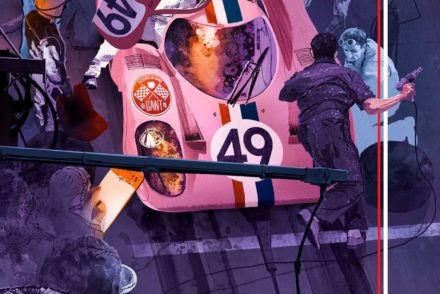
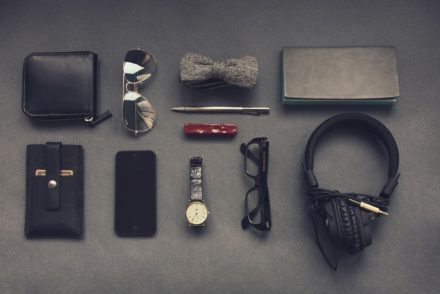
Just a thought: do you think this "Irish diaspora" has anything to do with the growing popularity of kilts and skirts for men?They've been around for a while but I think they are getting more and more accepted by popular society.Nice interview!